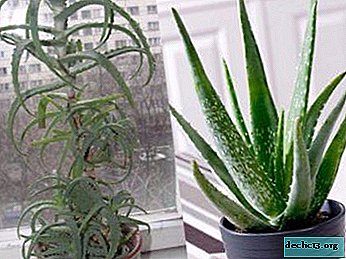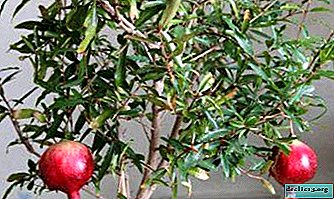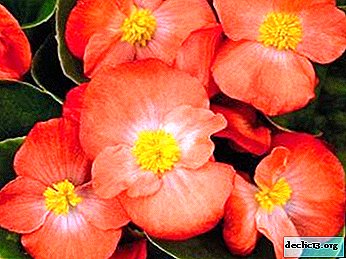Ordinary agave and healing aloe vera. What are the differences?

Most of us are familiar with the name Aloe Vera. It is often found in medical and cosmetic products. And many of us know a tall houseplant with a thick, woody trunk and long spiky leaves, from which our grandmother squeezed bitter green juice to drip into her nose for a cold. Perhaps the agave familiar from childhood is Aloe Vera?
No, the difference is that the agave (Aloe treelike) and Aloe vera are different, but closely related plants. They belong to the genus Aloe from the Asphodel family. All species related to it, and there are more than five hundred in all, are found in nature in the southern regions - in Africa and on the Arabian Peninsula. Among them are African Aloe, Aloe spinous, Beautiful Aloe and Tiger Aloe. But agave, which is sometimes mistakenly called American aloe, has nothing to do with this genus.
Appearance
Aloe vera (Aloe present) has a wide leaf rosette with a diameter of 60 cm. The stem in it is so short that it may seem like leaves grow directly from the ground. True, in the natural environment there are plants with a stem up to 80 cm.The stem of the Aloe tree in nature can reach 4 m, but rarely grows above 1 m on the windowsill.
Aloe vera leaves are grayish-green, sometimes variegated, agave leaves are green with a blue tint, always plain.Flowers of both types of cylindrical shape, collected in inflorescences on a long peduncle. But how then to distinguish the agave from Aloe vera? The former has bright red or orange flowers, while the latter is yellow. You can find out more about when and how Aloe vera blooms here.
Photo
Below is a photo of flowers on which you can see how the Aloe Vera flower differs from a regular agave or Aloe tree.
Aloe Vera Photo:


Aloe tree photo:


Discovery history and habitat
Both species have been known since time immemorial. Aloe vera has a long and proven history of application.
Already the ancient Sumerians knew about its medicinal properties. This is evidenced by an clay tablet about 2100 BC. It is also mentioned in the Egyptian papyrus of 1550 BC, where 12 methods of its medical use are described.There is a hypothesis that it is Aloe vera that is depicted on the walls of an ancient Egyptian temple about 6,000 years old. It is also known that Arab merchants delivered to India an expensive powder from the leaves of Aloe vera, "desert lilies," as they called it. The famous ancient Greek physician Hippocrates highly appreciated the plant..
The homeland of Aloe vera is the Arabian Peninsula, but currently in the wild this plant is found in all regions with a temperate and tropical climate, including Australia, China, Mexico, the southern states of the USA and even the south of Spain.
Aloe Arborea was also known to the ancient Egyptians, and they used its juice to mummify the bodies of the dead. Originally from South Africa, it is found naturally in Mozambique, Swaziland, Zimbabwe and Malawi. Like his brother, the agave is widely cultivated in many warm countries.
The healing properties of the plant
So, both types of plants have long been used in traditional medicine. From a strictly scientific point of view, there is insufficient laboratory data regarding the medicinal properties of aloe vera. All details about the medicinal properties and contraindications to the use of Aloe vera can be found in this article.
 But for Aloe treelike, studies were conducted on rats and rabbits, confirming its wound healing and antimicrobial effect.
But for Aloe treelike, studies were conducted on rats and rabbits, confirming its wound healing and antimicrobial effect.
Agave juice is also recommended to be consumed with high blood pressure - once a day, three drops per teaspoon of water 15 minutes before breakfast. In general, both species are similar in chemical composition and in traditional medicine are used in a similar way.
Sabur, a concentrated juice for external and internal use, is made from various types of aloe. It has a choleretic effect, increases appetite and enhances peristalsis, but in large doses it can cause severe poisoning up to death. Aloe preparations stimulate the formation of new cells.
Unfortunately, the formation of new cells can lead to the development of tumors, so aloe-based medications must be taken with caution.Aloe juice promotes collagen production in the skin, saturates it with organic acids, vitamins C, E and group B, beta-carotene, various micro and macro elements. This allows you to maintain youthful skin.
To achieve maximum therapeutic and cosmetic effects, it is recommended to use cut aloe leaves not immediately, but after keeping them for a couple of weeks in the refrigerator. Learn more about recipes from Aloe Vera for healing and beauty here.
Which flower is better?
Consider the difference between the two flowers - Aloe arborea and Aloe vera, which is better, and we will figure it out to the end - is it the same plant or not. To answer these questions, we give a small tablet.
| Title | Aloe (The generic name of the genus, including, in particular, the species Aloe vera and Aloe treelike) | Aloe vera | Aloe tree (agave) |
| Appearance | Herbaceous, shrubby or tree-like plants, leaves are collected in a rosette and arranged in a spiral. The leaves are thick, fleshy, with smooth or jagged edges. Cylindrical flowers of yellow, orange or red colors. | The trunk is short, a leaf rosette up to 60 cm in diameter, the leaves are gray-green, sometimes variegated, with spines along the edges. The flowers are cylindrical, yellow. | The trunk at home is up to 1 m, the leaves are bluish-green, always plain, with spines at the edges. The flowers are cylindrical, red or orange. |
| Natural habitat | Africa and the Arabian Peninsula. | Arabian Peninsula. | South Africa. |
| Historical information | Some species are known from antiquity, others are described only in modern times. | It has been known since ancient times. | It has been known since ancient times. |
| Medicinal properties | Some types are used in folk medicine as a wound healing and anti-inflammatory agent. | Wound healing and anti-inflammatory effect, stimulation of collagen production. | Wound healing and anti-inflammatory effect, stimulation of collagen production, lowering blood pressure. |
| Laboratory research | Not enough data. | Not enough data. | Laboratory studies confirm the wound healing and anti-inflammatory effect of the agave. |
Only you can decide which of the two types is worth choosing. Perhaps aloe vera with variegated leaves looks more decorative, but this is a matter of taste. Both types will help to maintain health, but still do not self-medicate. Be sure to consult your doctor before use..

















